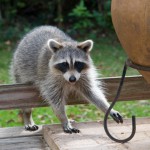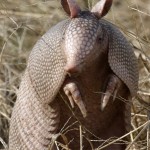READY TO GET STARTED?
REQUEST A FREE ESTIMATE
Fill out the form below or call (888) 466-7849 for a free, no-obligation estimate.
BRIEF DESCRIPTION
Raccoons are one of the most charismatic species of animals found in North America. They are said to be very intelligent; they can remember the solution to tasks up to three years later.
HABITS
THREATS
PREVENTION
For more information on raccoons and other wildlife removal, call Northwest Exterminating.
If you’ve read this blog before then you know that prevention is key. Whether talking about ants, termites, mice, or other pests and rodents, prevention is always the first step. Taking the proper steps to prevent these creatures from entering your home is the key to eliminating pest and rodent problems.
According to the Center for Disease Control and Prevention, rodents, such as rats and mice, spread over 35 diseases. Their diseases are spread through contamination by urine, feces, saliva, or bites.
So what are the proper steps to getting rid of rodents in your home?
First, is a thorough inspection of your home by a licensed professional who is knowledgeable about wildlife removal. Northwest Exterminating’s wildlife team specializes in the exclusion, removal, and control of rodents and wildlife. The wildlife team will inspect your property for any current infestations and points of entry. After that, they will work with you to customize a plan to get rid of any current rodents and the necessary steps to prevent future rodent infestations.
Second, is trapping the rodent. After your rodent control specialist has inspected your property and identified the infestation they will place traps or bait in the areas where the rodents will most likely travel.
Third, after rodents have been trapped and controlled, the wildlife team will work with you to take the necessary steps to prevent future rats and mice from returning. Proper prevention can include but is not limited to sealing cracks, blocking off entry points, eliminating food sources, and cutting back tree limbs from the roofline.
Lastly, it is very important that after the rodents have been properly trapped and out of your home that the area is carefully cleaned to avoid the spread of disease. Droppings and urine should be cleaned immediately, any nests should be removed, damaged wires repaired, and contaminated insulation should be replaced.
For more questions on rodent or wildlife control please call 888-466-7849 or visit us at www.callnorthwest.com
Northwest’s Wildlife Services Team specializes in the exclusion, removal, and control of animal nuisances. Among our specialties are squirrels, rodents, raccoons, opossums, bees, armadillos, and chipmunks. An important wildlife service in the coming warm months is our snake removal! Our Wildlife team uses a Green product that is used to deter snakes. We also spend a great deal of time educating the customer on snakes.
Georgia is among the states with the highest biodiversity of snakes in the U.S. with 43 different species. They are located anywhere in Georgia from the mountains in the north to the barrier islands along our eastern coast. Below we have pictures and descriptions of the most common venomous snakes. If you spot one of these, call our Wildlife Services Team at 770.436.3362 to get them off your hands, or better yet, remove them very far away from your hands!
Copperheads are fairly large – anywhere from 2 to over 3 feet long! They have brown, triangular heads and elliptical pupils. You likely won’t want to get close enough to be sure, but they have two tiny dots at the center of the top of the head. More distinguishing features include yellow tails for juvenile snakes, and the brown bands that run along their body are in a distinct hourglass shape. They are found mostly in the forested areas of Georgia and South Carolina.
Just like copperheads, cottonmouths have large, triangular heads with elliptical pupils. They get the name water moccasin from their semi-aquatic nature and are likely to be found by mostly all types of freshwater habitats. These are more difficult to identify by appearance because they have a wide range of colors but tend to feature colors that will camouflage them into their habitats.
Eastern diamondbacks are among the largest of 32 species of rattlesnakes, ranging anywhere from 2.75 feet to 6 feet long. They have large, broad heads with two light lines on their faces. These are easily recognized by their brown diamonds, surrounded by lighter colored brown, tan or yellowish scales. They can be located anywhere from the southern part of North Carolina, but especially in South Georgia and Florida. They like to be in drier, sandy or low cut grass areas and tend to avoid wetter areas, though they are great swimmers and even travel through saltwater!
These snakes tend to range from about 3-5 feet in length and are usually gray with a pink, yellow, orange or brown stripe running along their back. They have solid black tails and black chevrons along the back and sides of their body with the point of the (V) pointing forward. They are found in most of the eastern United States, but are somewhat absent from Florida. They can be found in a wide range of areas, but are least likely to be found in highly urbanized or residential areas.
This rattlesnake is on the smaller side, usually coming in at under 2 feet in length. This snake has 9 large scales on the top of it’s head and a tiny rattle that can rarely be heard. They have a row of mid-dorsal spots and a bar from the eye to their mouth that ranges from black to brownish. The name is deceptive as they can be gray, tan, lavender, orange, red, or even black. These are mostly located from central Georgia up throughout South Carolina. They also like to be near water sources like creeks, marshes, and swamps.
“Red on yellow, kills a fellow. Red on black, friend of Jack.” These snakes are sometimes up to 4 feet in length with smooth heads with a bright body pattern of black rings in which the red and yellow rings touch each other. These are sometimes confused with king snakes, but these snakes only have the red touching the black rings and are not venomous. These snakes are found all the way from Louisiana to Florida, where they are most prevalent. They are rarely spotted because they hide under ground and spend only a limited time crawling above ground. Unfortunately, because of these secretive habits, coral snakes tend to persist in suburban areas.
Melissa Brown
[email protected]
Sources:
http://georgiawildlife.com/node/497
https://uga.edu/srelherp/snakes/index.htm
http://srelherp.uga.edu/snakes/pics/agkcon210.jpg
http://srelherp.uga.edu/snakes/pics/agkpis210.jpg
http://srelherp.uga.edu/snakes/pics/agkpis4.jpg
http://srelherp.uga.edu/snakes/pics/croada210.jpg
http://srelherp.uga.edu/snakes/pics/crohor3.jpg
http://srelherp.uga.edu/snakes/pics/sismil210.jpg
http://www.petmd.com/sites/default/files/coral_snake.gif
 According to a recent article by the Wall Street Journal, wildlife damage to crops, landscaping and infrastructure now exceeds $28 billion a year. The article addresses the benefits to the increase in wildlife but also the damage they can cause and the effect it has on our local economies.
According to a recent article by the Wall Street Journal, wildlife damage to crops, landscaping and infrastructure now exceeds $28 billion a year. The article addresses the benefits to the increase in wildlife but also the damage they can cause and the effect it has on our local economies.
This year, Princeton, N.J., has hired sharpshooters to cull 250 deer from the town’s herd of 550 over the winter. The cost: $58,700. Columbia, S.C., is spending $1 million to rid its drainage systems of beavers and their dams. The 2009 “miracle on the Hudson,” when US Airways flight 1549 had to make an emergency landing after its engines ingested Canada geese, saved 155 passengers and crew, but the $60 million A320 Airbus was a complete loss. In the U.S., the total cost of wildlife damage to crops, landscaping and infrastructure now exceeds $28 billion a year ($1.5 billion from deer-vehicle crashes alone), according to Michael Conover of Utah State University, who monitors conflicts between people and wildlife.
Click here to read the whole article.
For wildlife removal or exclusion needs in your home or business, call Northwest. A Wildlife Control representative will inspect your property for evidence of wildlife and will determine the points of entry being used by these critters to get into your structure. A customized plan will be developed to get the immediate nuisance under control and to seal off any known points of entry.
Source: http://online.wsj.com/article/SB10001424052970204846304578090753716856728.html#
 Out of the 20 known species of armadillo, only the nine-banded armadillo has strayed out of Latin America. During the 1880s, the animal appeared in Texas and has been pioneering into new dwellings ever since. Lately, the nine-banded armadillo has actually rooted itself as far east as Georgia & South Carolina and as far west as Illinois. The animals are occasionally noticed in Indiana and Iowa. A few researchers have proposed that escalating temperatures because of weather change might be permitting armadillos to expand toward further habitats.
Out of the 20 known species of armadillo, only the nine-banded armadillo has strayed out of Latin America. During the 1880s, the animal appeared in Texas and has been pioneering into new dwellings ever since. Lately, the nine-banded armadillo has actually rooted itself as far east as Georgia & South Carolina and as far west as Illinois. The animals are occasionally noticed in Indiana and Iowa. A few researchers have proposed that escalating temperatures because of weather change might be permitting armadillos to expand toward further habitats.
The gluttonous critters can create their homes in woodlands, grasslands, and even suburbs. Furthermore, fruitful females start breeding at barely one year old and can have litters of four babies every year. An armadillo’s dense frame is uncomplicatedly modified skin that acts as one approach that this abnormal animal shields itself. When an armadillo encounters a threat, it commonly dashes, digs, and bears down in the ground to stop them from being turned over. The three banded armadillo is the only species that can roll up into a ball for its own safety and its teardrop-shaped head plate fuses the gap so there are no cracks in the protective covering. Domestic dogs, wild cats, birds of prey, and humans are just a few of the threats to armadillos.
Our Wildlife Services Team specializes in the exclusion, removal, and control of wildlife nuisances. So if you see see or hear the scurrying of an armadillo, or another unwelcomed creature, our Wildlife Services Team can assist you in getting rid of the wildlife in your home! Call the Mouse! 888-466-7849
Now that you know a little more about Armadillos, do you think this armored animal is cool or creepy?
Cara Carver
[email protected]